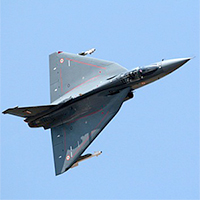Is India on the Verge of Building a Super Jet Fighter?

In 2016 the Indian Navy rejected the domestically built Tejas jet fighter or Light Combat Aircraft after a troubled thirty-three years of development in which the maritime fighting branch had invested significantly. However, the Indian Navy argued that the Tejas weighed too much, and produced insufficient thrust for takeoff from the ski-jump ramp of its forthcoming aircraft carrier.
But the Indian Navy hasn’t given up entirely on the Tejas; it is considering a Mark 2 variant under development, which will be powered by the same F414 turbofan engines as the U.S. Navy’s Super Hornet fighter.
The Tejas was developed out of the Light Combat Aircraft program, which sought a replacement for the hundreds of MiG-21 fighters nearing the end of their service lives in the Indian Air Force. The single-engine Tejas has a tailless delta-wing configuration and supposedly costs only $25 million per airplane. However, it took decades for the LCA to come together, and it continued to rely heavily on foreign components, including an Israeli Doppler radar and General Electric F404 turbofan engines.
With a top speed of Mach 1.6 to 1.8, a maximum external load of 7,700 pounds and a service ceiling of fifty-two thousand feet, the Tejas remains unexceptional compared to top-performing fourth-generation light fighters such as the F-16. The Indian Air Force has only ordered 123 Tejas jets so far to equip six squadrons by 2024. HAL, however, is having difficulty ramping up production from eight aircraft a year to the desired sixteen.